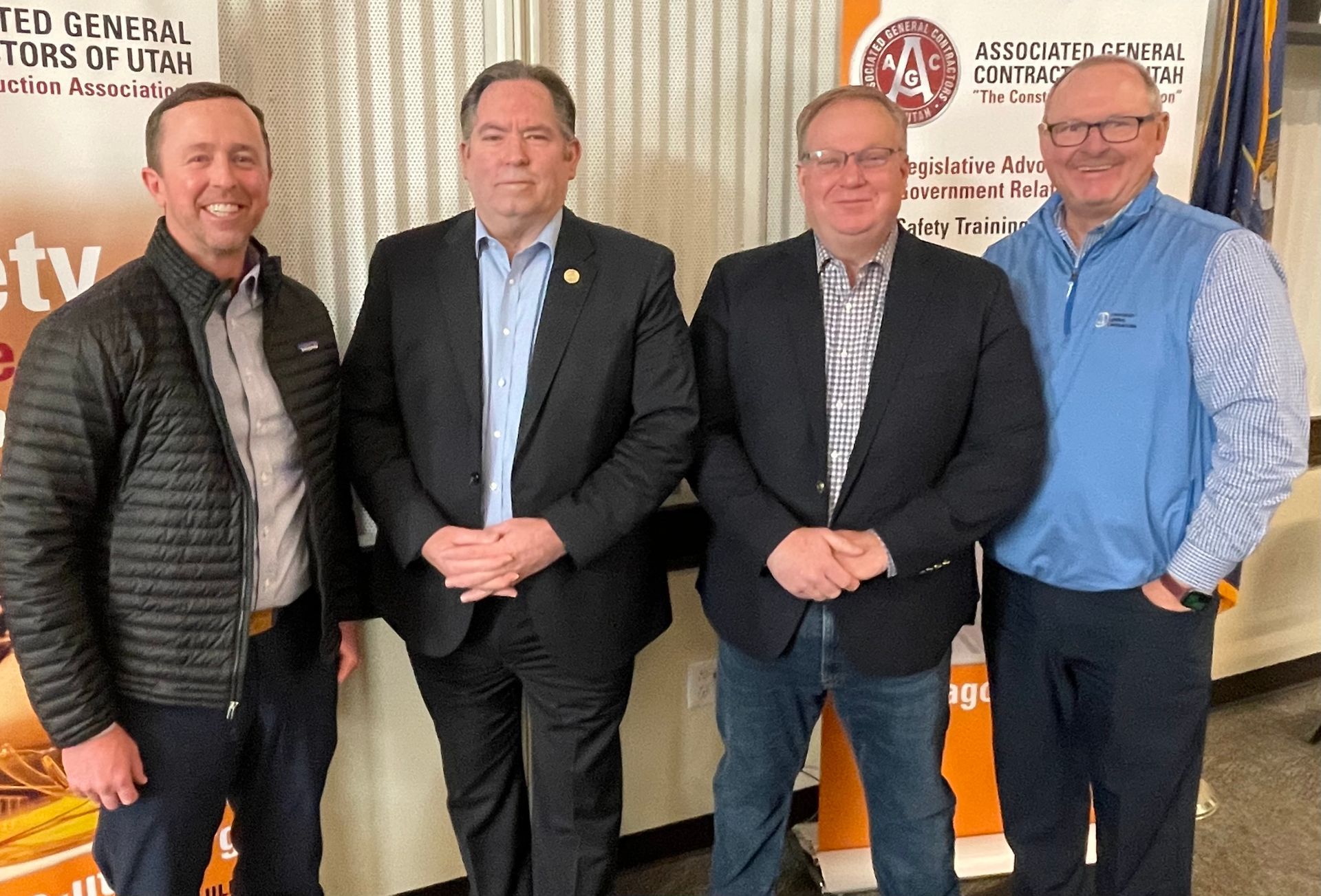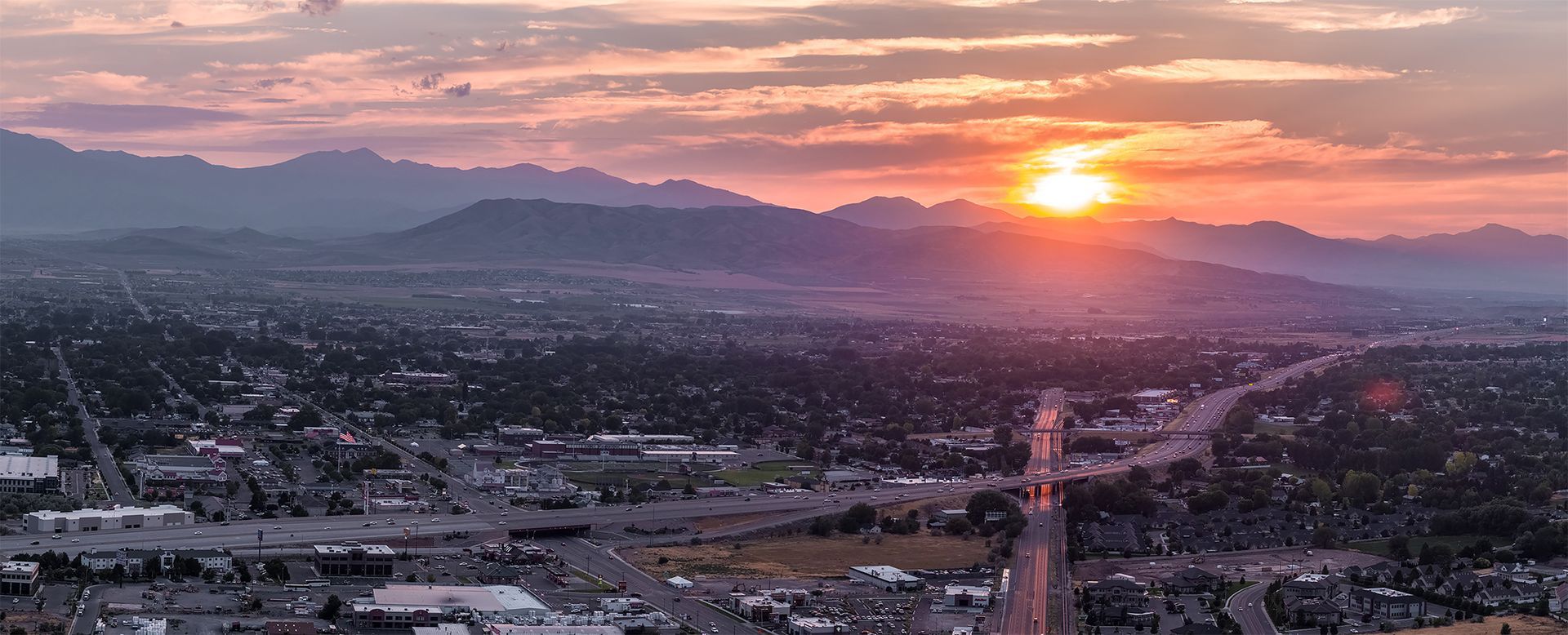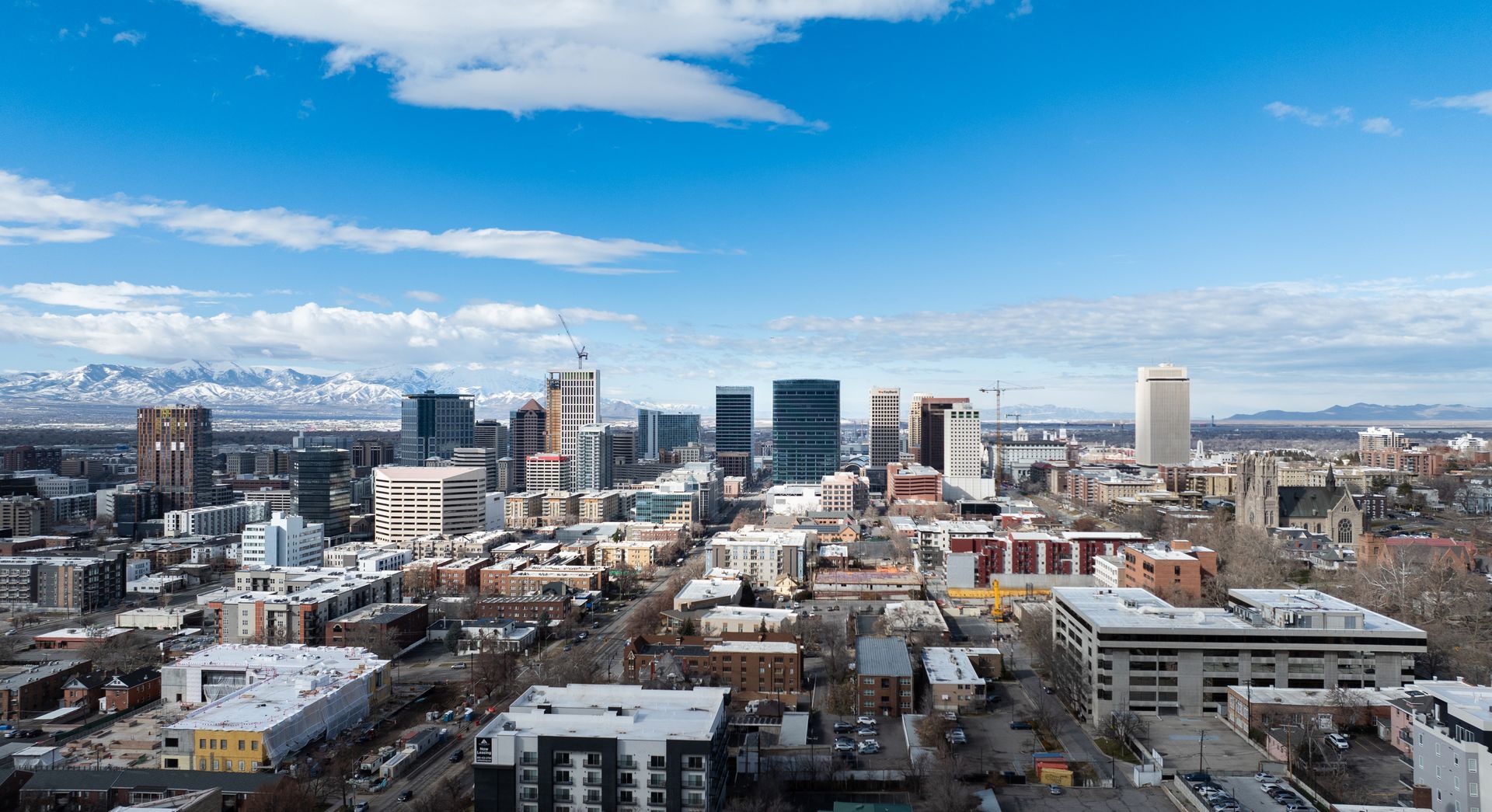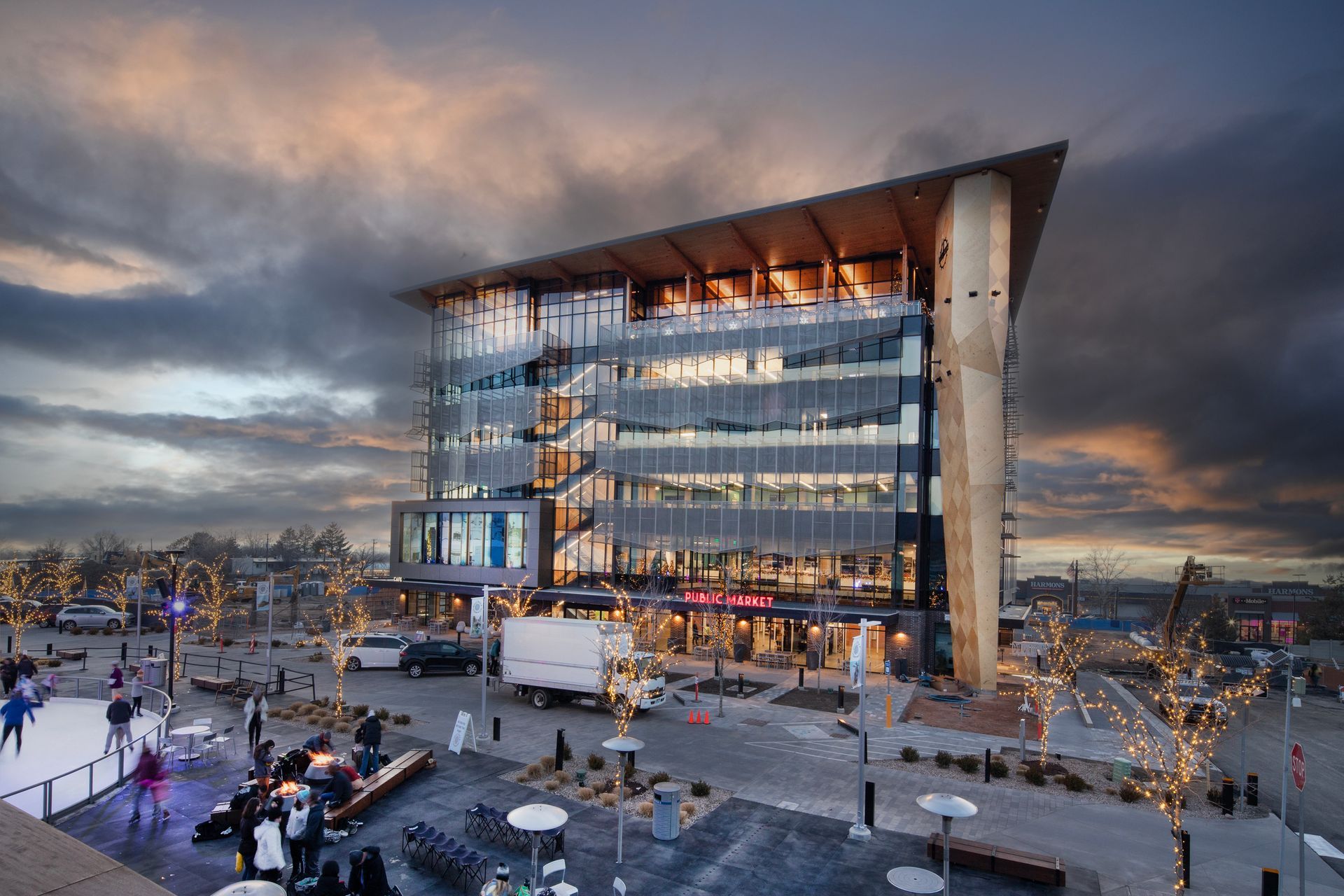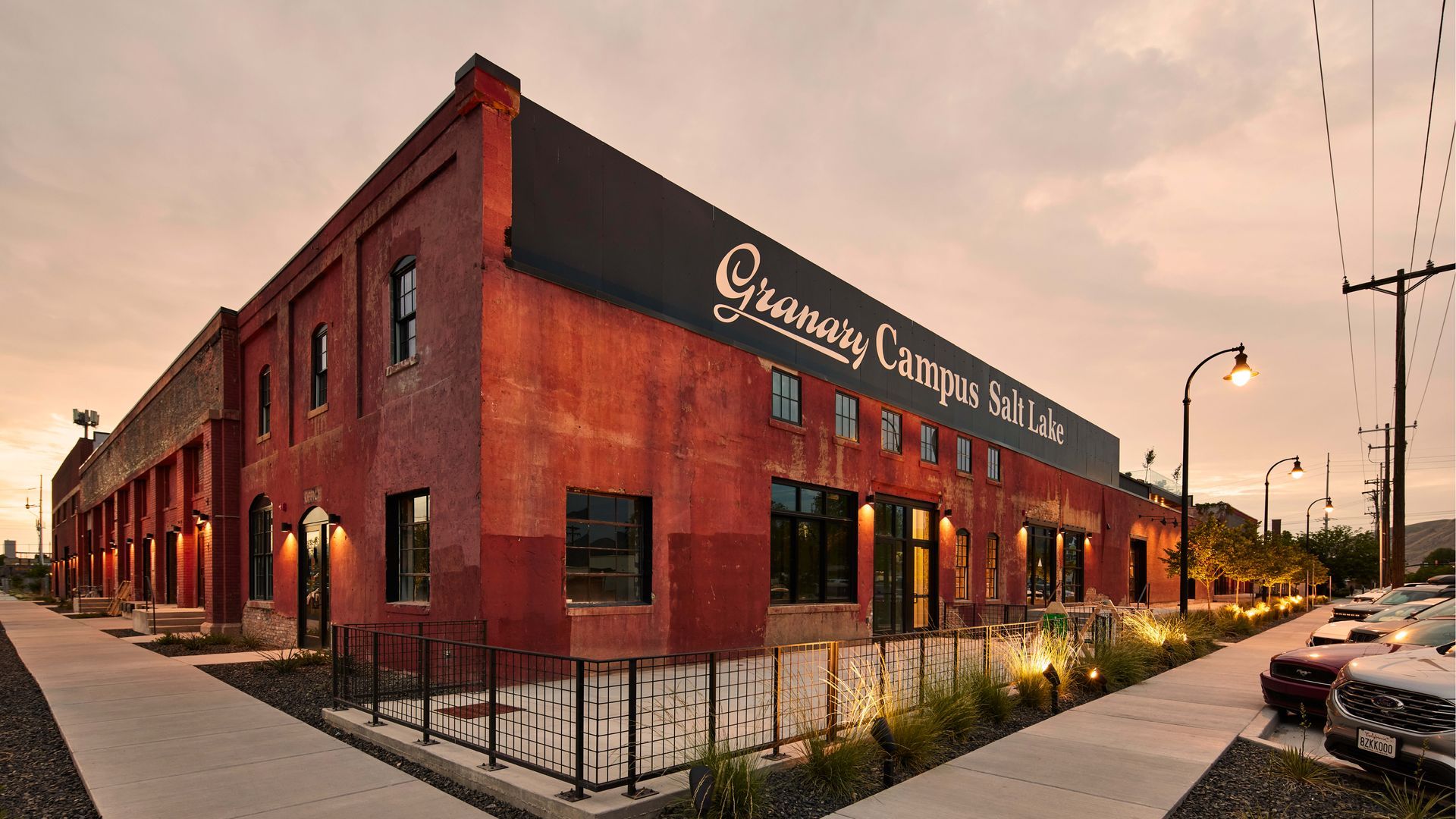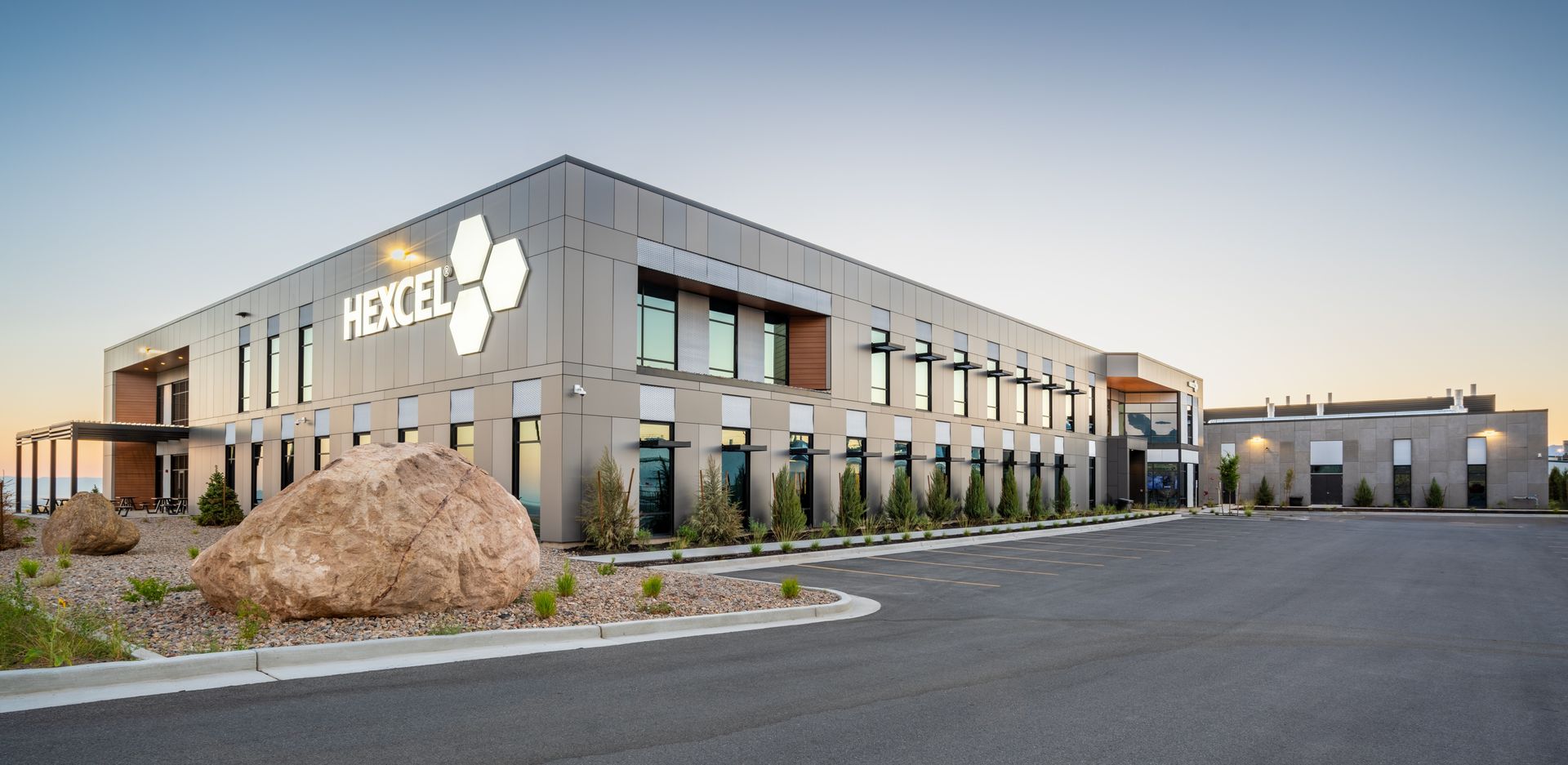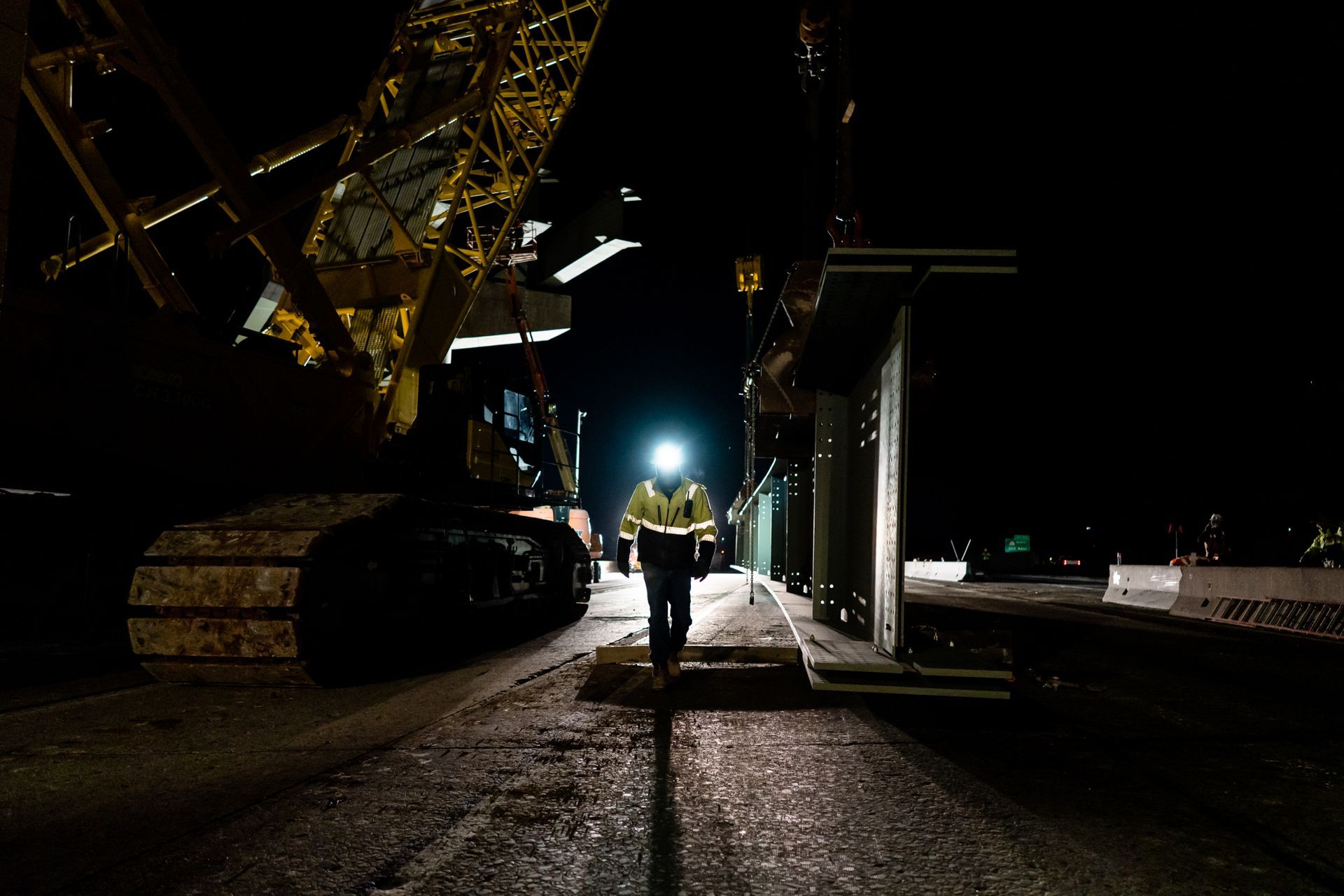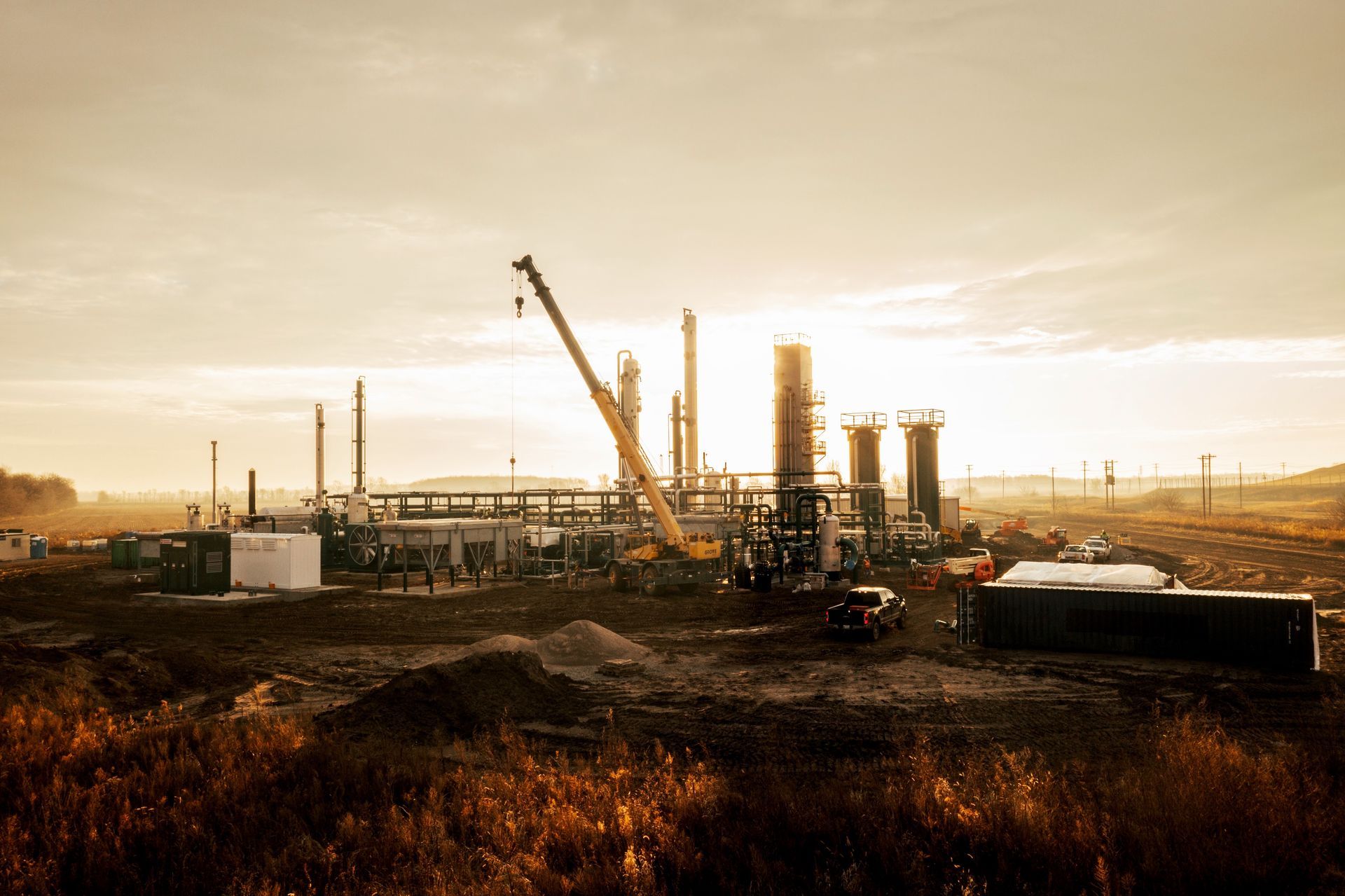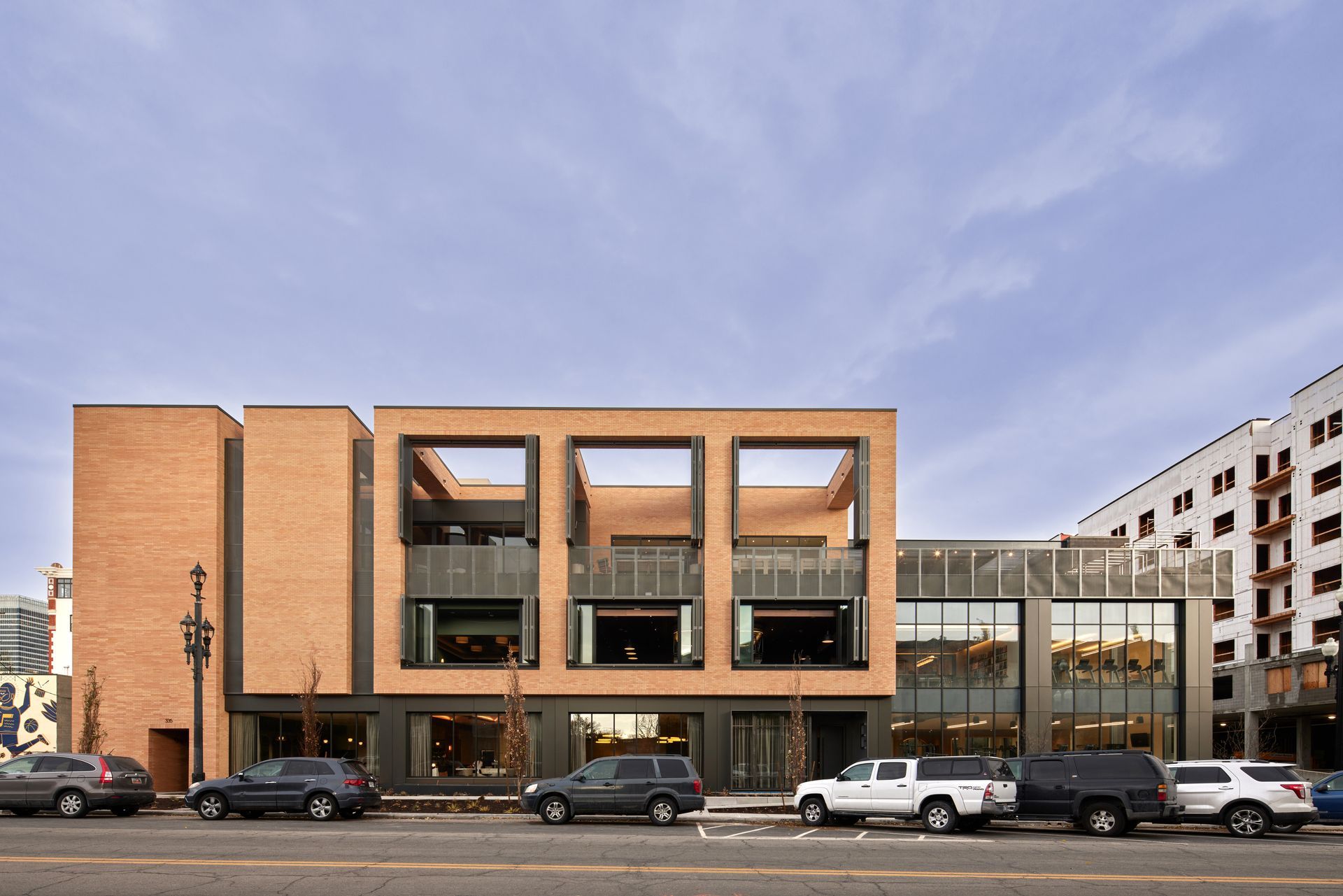Established in 1981, the State of Utah’s Division of Facilities Construction and Management (DFCM) has been among the state’s most prominent owners—public or private—with stewardship of an eye-popping 3,900 buildings across Utah.
The agency finds itself as busy as ever on the heels of completing the 2022 Utah Legislative session, which saw legislators poring over dozens of project requests as they tried to figure out the best way to divvy up some $2 billion in funding.
“This legislative session was pretty crazy,” said DFCM Director Jim Russell on March 18 at a presentation to the AGC of Utah in Salt Lake City. “They ended with about a $2 billion surplus to spend and they had $6 billion in requests, so it was a little difficult to manage this year. There were projects popping up in virtually every committee. We were scrambling trying to make sure we had an adequate budget for all the projects presented. Overall, we got about $1.8 billion in projects, so that’s good news for the local [construction] community.”
Russell said DFCM currently has 469 active projects totaling more than $4.3 billion, a sizable number to say the least. One of the most prominent of those projects is a new $210-million North State Capitol Building, a CM/GC project currently in design that received $68 million in new money to get it fully funded. DFCM employees moved out of their former home near the Utah State Capitol in January 2020 to clear the site for demolition and reconstruction. They have been patiently dealing with the challenges of remodeling the new digs in West Valley City, the site of a former American Express call center that is a $107 million total project—$30 million for the building/land purchase, $77 million in renovation costs.
That number is a far cry from the originally projected $335 million price tag that had been estimated. Plus, Russell said it consolidates myriad State of Utah agencies (13 total) into one building, totaling some 765 state employees (DFCM has close to 200 employees).
“They’re remodeling around us; for some reason, the only place they ever work—hammering and drilling—is right above my desk,” Russell joked during an interview in mid-January. “It was completely gutted—it’s about as deep of a remodel as you can do. It’s going to be an open space concept. This helps with hiring and retention and for us to be somewhat competitive. Your [office] spaces factor into what people are looking for. We’re vacating four buildings and at least that many leases and moving everyone into this one facility.”
As Russell mentioned, business is brisk and expected to keep rolling with the agency’s 700-project, $4-billion backlog. “It’s been like this the past few years,” he shrugged. He’s been with the DFCM for nearly two decades and has seen budgets grow with the population increases. “15 years ago, we were doing $2 billion [annually].”
“It’s an exceptionally busy time given the amount of work we have and other constraints,” said Matt Boyer, Assistant Director for Capital Development.
Russell acknowledged the solid working relationship and partnership that exists between DFCM and A/E/C firms. He and his staff understand the value that designers and contractors bring to the equation.
“We feel we have a good working relationship with our A/E/C community,” he said. “We’re grateful for the partnership and for what you do. There is a lot of confidence in what we do, and we can’t do that without you. We have great designers, great contractors, and great subs that take pride in what they do.”
Higher Education Remains Priority
Utah’s youthful demographics—far and away the lowest median age in the country (31.2; the average is 38.5)—has been a driving factor in spurring new buildings on university and technical college campuses to keep up with projected demands over the next 20 years.
Russell showed a list of 12 higher ed/tech college projects either in planning/programming or design that received a combined $600 million in state funding, led by $120 million each for the Utah Valley University (UVU) Engineering Building and the University of Utah (U of U) Computing & Engineering Building, $80 million to the Utah State University (USU) College of Veterinary Medicine, and $56 million to a Utah Technical University General Classroom Building.
Nine other non-state-funded higher education projects totaling $640 million were also listed, including the much-anticipated $400-million U of U West Valley Health and Community Center. Other key projects on that list include the $62-million U of U Indoor Practice Facility, Campus View Suites Phase III at Utah Technical University (UTU), and nearly $48 million for the U of U’s Kahlert Village Fourth Wing.
Russell also mentioned $191 million in state funding that will be directed to approximately 400 DFCM Capital Improvement Projects, of which 80 are delegated between USU and the U of U.
One other noteworthy project at the U of U getting closer to being fully funded is the nearly $400-million School of Medicine, which has been funded to $285 million so far. Material price increases are necessitating another $60 million from the state and more from private donors.
Russell admits that occasional critics will guffaw about what they feel are exorbitant costs for certain higher education projects—“Sometimes we get accused of building Taj Mahals”—but he remains steadfast that DFCM does its best to earn the trust of legislators and the public in general. There have been recent discussions on doing more renovations and repurposing old buildings on school campuses, rather than building completely new structures.
With all signs pointing to projects just getting more costly due to material spikes, supply chain shortages, and rising inflation, there is a chance the legislature could halt construction funding for 2023 on some or all major projects.
“Some projects are over budget; if costs keep going up, the legislature may not want to build any more buildings. It’s important to get our arms around it,” said Russell, adding that since 2015 there has been a 38% escalation in project costs, with last year at 13% and this year projected again at 13%. “Prices are significantly higher—we always battle that. If the legislature paused [construction funding] for a year or two, that would have an obvious [negative] effect on our economy.”
Point Forward
As the new billion-dollar Utah State Prison nears its long-awaited completion for its 2,500 inmates in early summer, demolition and abatement of the old prison site—aptly dubbed “The Point”—will hasten immediately, to the tune of $25 million. The legislature also committed $57 million (of an expected initial $150 million) to infrastructure for The Point, as the state will keep tight reigns on how this once-in-a-lifetime development opportunity plays out in the heart of the Wasatch Front.
Russell mentioned how Atlanta has its distinctive downtown, midtown, and Buckhead areas, and envisions The Point as an opportunity to establish a true “midtown” region within the 80-mile-long Wasatch Front.
“It needs to be something significant—that’s why the state is going to hold the property because they want this to be ‘thinking big.’ We have a baseline master plan to force development how we want it to go,” he said. “It’s going to have a higher-ed component, it’s going to be a walkable city. It’s going to have a mix of residential and commercial. It’s the 10-minute city approach of live, work, and play.”
Other exciting potential aspects of The Point include a stadium for local sports events and a pedestrian/bicycle bridge over I-15 that connects to Salt Lake County’s trail system.
Water Conservation a Mounting Priority
Legislators appear to be ready to take water conservation seriously too, although a modest goal for 2023 of reducing water usage by 5% from 2020 standards seems more than reachable. By 2026, that number is 25%. In addition, new projects will have 20% less turf, on average.
Russell said the 3,900, mostly unmetered buildings under DFCM will require a lot of manual work over the next five years and a huge amount of money ($550 million) in capital improvement spending to put metering and irrigation controls in place on DFCM buildings.
“To do this with all our buildings, it’s a big cost and expenditure,” he said. Given Utah’s current drought, this is one investment that is highly relevant and necessary.
(Design Note: Create a 2/3 page section with this list. Two column wide. If it needs to run over two different spreads it can. Or if you can make it lay out better in a different way like full page, go ahead).
State Funded Agency Projects
Project Funds Approved Status
Capital Improvements $191 million New
North State Capitol Building $68 million Design
Sanpete County Courthouse (Manti) $14.1 million Design
Division of Natural Resources Loan Peak Facility Relocation $16.6 million Design
Department of Government Operations Fleet Surplus & DFMC Relocation $8.9 million Design
Point of the Mountain Authority Infrastructure $57 million New
Point of the Mountain Prison Demo and Abatement $25 million New
Department of Human Services Utah State Developmental Center Comp Therapy Building $38.5 million New
Utah Schools for the Deaf and the Blind Salt Lake School $15 million New
Utah Schools for the Deaf and the Blind St. George School $15 million New
Adult Probation & Parole Behavioral Health Trans. Facility $6 million New
Utah State Fair Park Arena Upgrade $3 million New
State Funded Higher Ed/Technical College Projects
UVU Engineering Building $120 million New
U of U Computing & Engineering Building$120 million New
USU College of Veterinary Medicine $80 million New
U of U School of Medicine Additional Funding $60 million New
UTU General Classroom Building $56 million New
Mountainland Technical College Payson Building $47.9 million New
Weber State University David O. McKay Building Renovation $27.2 million New
Tooele Technical College Building Expansion $24.7 million New
Davis Technical College Campus Renovation $20.3 million New
Southern Utah University Music Center Renovation $19.5 million New
Bridgerland Technical College Landbank $16.5 million New
Southern Utah University Stadium Field Repair/Prevention $9.2 million New
Non-State Funded Higher Ed Projects
U of U WVC Health/Community Center $400 million Programming
UTU Campus View Suites Phase III $62.5 million New
U of U Indoor Football Practice Facility $62 million New
U of U Kahlert Village Fourth Wing $47.6 million New
U of U Impact Epicenter Building AF $33 million New
UVU Parking Garage $12 million New
USU Monument Valley $10 million New
USU Maverick Stadium Improvements $7 million New
USU Nora Eccles Arts & Education $6 million New
Non-State Funded Agency Projects
Division of Natural Resources Parks $76.9 million New
VA Salt Lake Veterans Nursing Home $21.3 million New
Salt Lake Community College ATC Fire Rebuild Additional Funding $5 million Design
DABC Park City Area Liquor Store $8.1 million New
DABC St. George Area Liquor Store $7.4 million New
DABC Foothill Liquor Store AF $2.1 million Design
DABC SLC Downtown Liquor Store AF $4.5 million Bidding
